Prominent Interior Designer & Architect Tina Norden Shares Her Insights on Design and Projects at Conran and Partners
Tina Norden, a principal and partner at Conran and Partners, boasts a remarkable career that transcends geographical boundaries. Her journey with the company commenced during her year out after her architecture degree at Westminster University, where she immersed herself in the world of Conran. From that pivotal point, her creativity and expertise have flourished. She completed her studies with an MA in Architecture and Interiors at the RCA as a result of being exposed to the world of interiors during her year out. Tina is now one of five owners of the practice, following a management buyout from the Conran Estate at the end of last year.
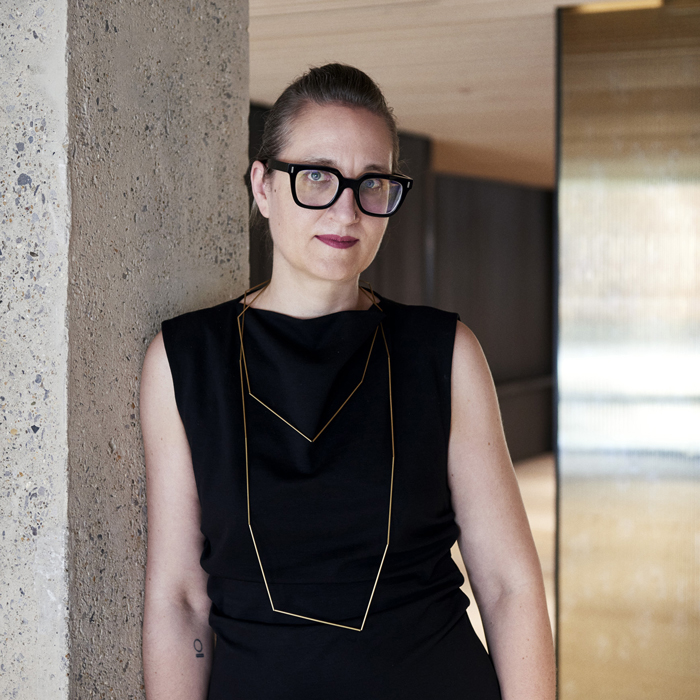
Tina Norden, Principal and Partner at Conran and Partners
Norden’s extensive architectural and interior design portfolio encompasses high-end residential spaces, hotels, restaurants, and boutique retail establishments. For several years, she had the privilege of collaborating closely with Sir Terence, particularly on hospitality and restaurant projects, endeavours that were, in her words, “his heart and soul.”
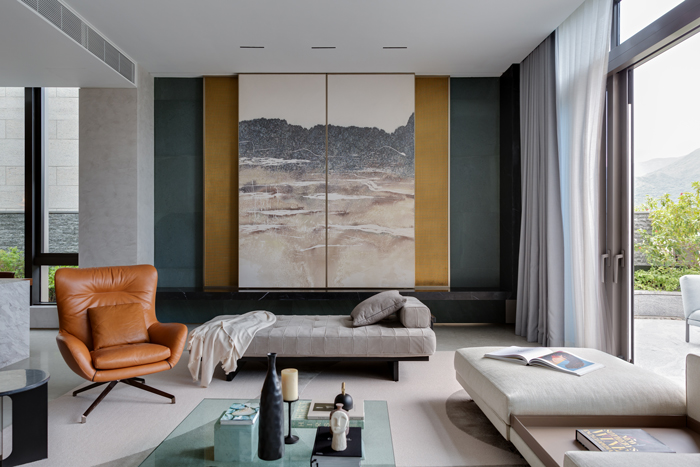
Conran and Partners, Villa Lucca, Hong-Kong
Describing her current role as a “thrilling new chapter,” Norden reflects on the recent months as a “crash course” in running a business including all financial aspects, which she acknowledges as an enriching addition to her career.
From 1997 to the present, Norden’s journey has been nothing short of extraordinary. Her initial attraction to Conran and Partners stemmed from their holistic approach to projects, a practice that emphasizes the interconnectedness of architecture and interior design. In guiding the company forward, Norden affirms that Sir Terence’s unwavering emphasis on good design accessible to all and design that enhances people’s lives will continue to be a guiding principle.
“We enjoy having people on our team who understand both architecture and interiors because we have always been stimulated by the cross-polarization of disciplines. So I think, in many ways, our ambition is to play on our strengths and to keep doing what we are doing but keeping a fresh eye on everything.”
“We need to remain agile, relevant, and attuned to industry trends, rather than settling for the role of a ‘safe pair of hands.’ We aspire to be an exciting catalyst of creativity, consistently infusing new ideas into our projects. This commitment will always remain at the forefront of our endeavours.”
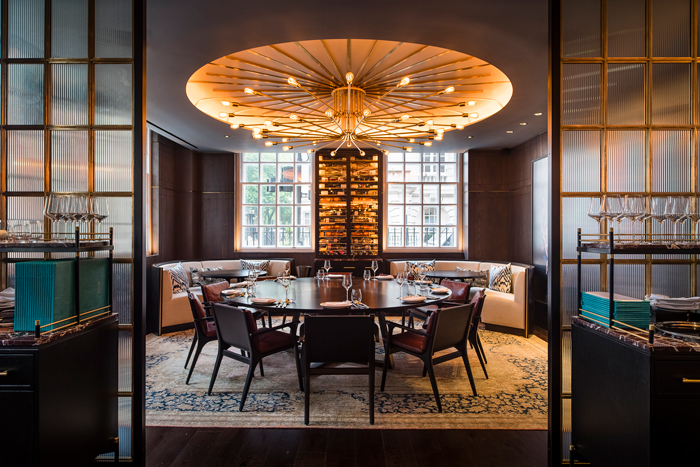
Conran and Partners, Rüya Riyadh, London
Tina’s impressive portfolio boasts noteworthy projects such as the Park Hyatt in Auckland and Jakarta, the Hotel Maximilian in Prague, and a new brand identity for The Peninsula Boutique & café, with the first opening in Hong Kong. While Conran and Partners maintain a strong synergy between architecture and interior design, a new trend is emerging. Hotels, for instance, are now seeking a more residential ambiance, while residential clients are increasingly desiring projects that evoke the charm of boutique hotels.
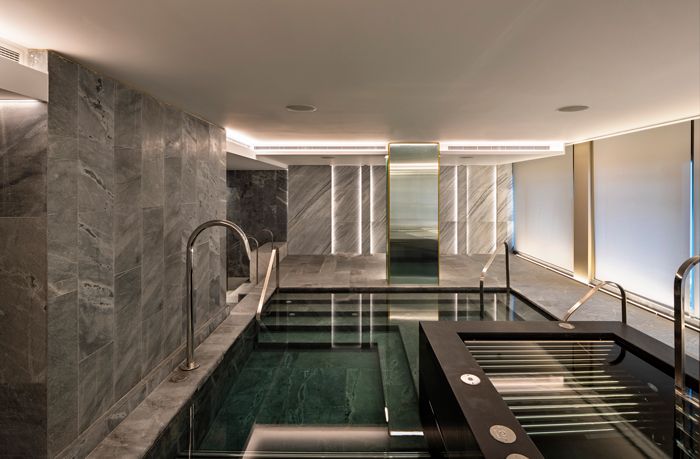
Conran and Partners, Park Hyatt, Auckland
The crux of this convergence is the versatile utilization of spaces, a facet of design that is well-recognized by designers. For instance, modern business travellers require functional workspaces while on the move. Consequently, hotel room desks, once on the decline, are experiencing a resurgence – even if in different guises.
“The evolution of workplace environments within the hospitality sector presents a significant consideration for designers. An example is our work on the Crowne Plaza project with IHG, which entailed a comprehensive brand design reimagined for the modern business traveller. In this context, we delved into the integration of work-life dynamics within a hotel setting. Such themes have gained even greater prominence in the post-pandemic landscape.”
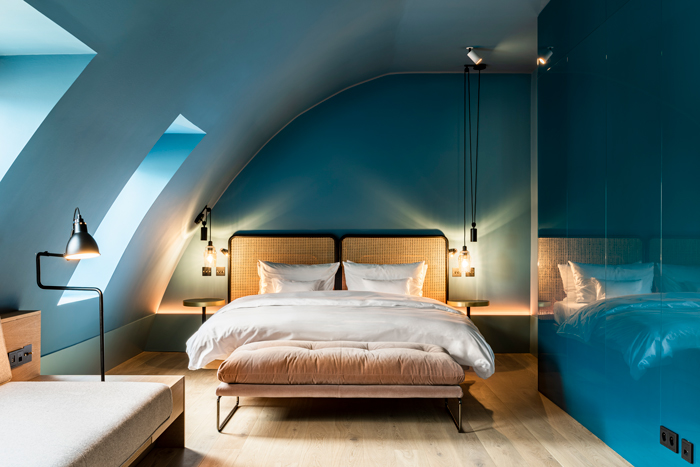
Conran and Partners, Hotel Maximilian, Prague
Understanding the needs of consumers begins with in-depth research, a practice that Conran and Partners extensively embrace to maintain their status as a dynamic studio. Norden also underscores the importance of attending events and industry talks as a means of cross-pollination of ideas, including those which extend beyond one’s own discipline.
“With every project we start with research: what or who are the competitors? What is happening in the marketplace for that specific project? As well as investigating the surrounding areas and architectural history. I frequently attend events and industry talks to stay informed about competition and market dynamics. Listening to diverse perspectives and forming our own informed opinions is paramount in today’s landscape.”
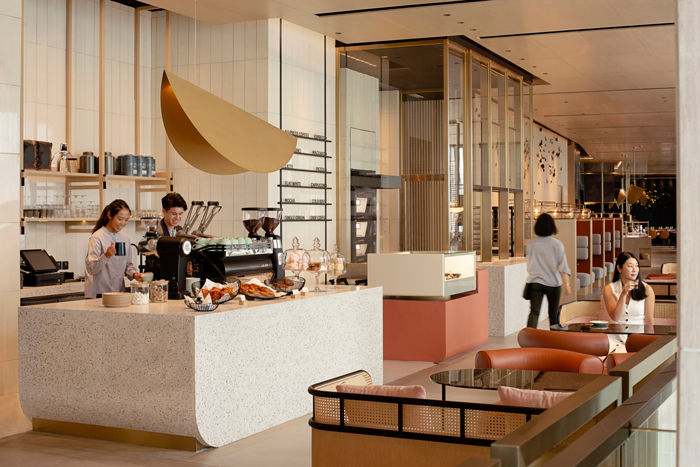
Conran and Partners, FEAST, Hong Kong
While external sources of knowledge enrich Norden’s expertise, it is her own work that serves as a vital source of learning. She acknowledges that projects that face challenges or ‘first-time’ experiences have played a pivotal role in her professional growth over the past 25 years. For example, her work on the South Place Hotel in London, which opened its doors in 2012, offered invaluable insights.
“That project marked my first substantial foray into hotel design, especially in urban city centres. It is also a BREEAM Excellent building, so there were two steep learning curves at the same time. South Place taught me a great deal about hotels including their integration with the neighbourhood, and the complexities of sustainability in a sector that often grapples with energy efficiency.”
International travel has also significantly enriched Tina Norden’s career, exposing her to diverse perspectives and fresh insights to inform her designs. As a result, her work is informed by teamwork – a range of experiences and expertise informing the decisions made.
“Observing how people do things in different countries and listening to concerns across the globe is vital. What something means in a particular location can be understood completely contrary elsewhere, for instance the cost or the use of spaces. Being attentive to the people I have encountered abroad has made me more open-minded and engaged as a designer as I integrate their needs into the design.”
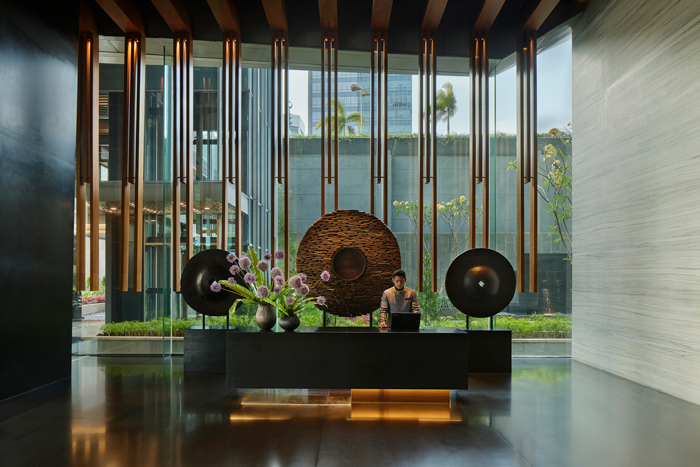
Conran and Partners, Park Hyatt, Jakarta
Moreover, the influence of culture and the local environment is unmistakably evident in her work, notably in the Park Hyatt, Jakarta. Norden’s intent was not merely to incorporate elements of Indonesia’s natural surroundings but also to celebrate local craftsmanship. These personal design touches imbue the travel experience with meaning, fostering a stronger connection between guests and their surroundings.
“As a European design practice, there is an underlying European design sensibility but we also consider wider cultural requirements. For example, Indonesia is a majority Muslim country, so there are religious considerations. We must also highlight the cultural heritage of a location.”
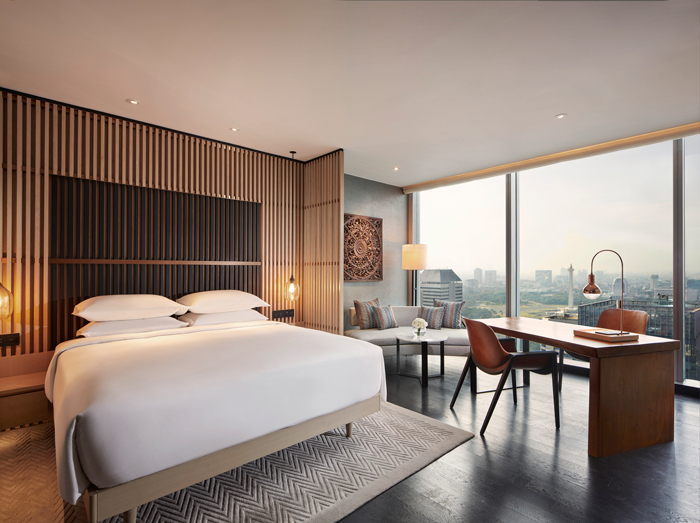
Conran and Partners, Park Hyatt, Jakarta
“Jakarta is a sprawling, urban, Asian metropolis, but we also wanted to bring a bit of the beauty and heritage of Indonesia as a country into the project. We utilized black lava stone and black granite for underlying materials to reflect the volcanic islands, for example. Each of the typical guest rooms has fabric panel that was woven locally, and decorative panelling crafted by skilled local artisans and manufacturers.”
One of Conran and Partners’ key strengths lies in their early involvement in projects, collaborating with other architecture practices to enhance the project’s quality, complementing its structure, and adding value to layout plans. This approach ensures the seamless integration and the team at Conran have a clear understanding of how creativity and technical precision intertwine.
“From an interior design perspective, we never propose anything that’s unattainable, as we have a keen understanding of the architect’s vision. In certain cases, we focus on enhancing the project’s first impressions by bolstering entrances and the point of arrival. At other times, our efforts are directed towards optimizing room sizes.”
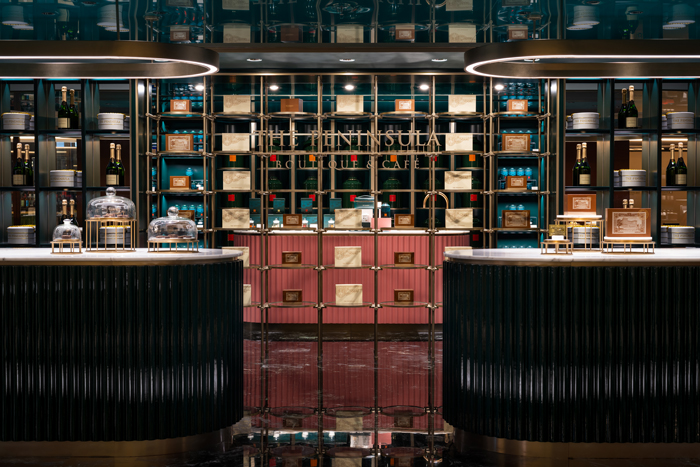
Conran and Partners, The Peninsula Boutique Cafe, Hong Kong
Sustainability is also a central focus in project planning and execution. Norden points to the QO Hotel in Amsterdam (now rebranded as Ruby Emma) as a pioneering example, where innovative methods, such as using blacked-out shutters instead of air conditioning for cooling, were employed. Norden believes that even small sustainable efforts can make a significant impact on the overall project’s sustainability mindset.
Guests are increasingly interested in a project’s sustainability credentials. “The more operators realise that sustainability plays a crucial role in attracting guests, the more pressure there will be to develop projects with sustainability at their core.” 1 Hotels are referenced as being particularly pioneering in melding sustainability with good design, a significant influence on their success.
This emphasis on sustainability is particularly pronounced when people immerse themselves in nature, whether on a safari or a pristine beach in the Maldives, where the environmental impact is glaringly obvious.
While Tina Norden hopes that the future moves towards welcoming the more conscious traveller, the future of architecture and design is more fractured. The uncharted landscape of design trends underscores the importance of creating designs that are authentic and enduring.
“It’s not about conforming to fleeting trends but adhering to a compelling narrative and a robust concept. With these elements in place, design can stand the test of time, unaffected by the transient nature of fashion.”




